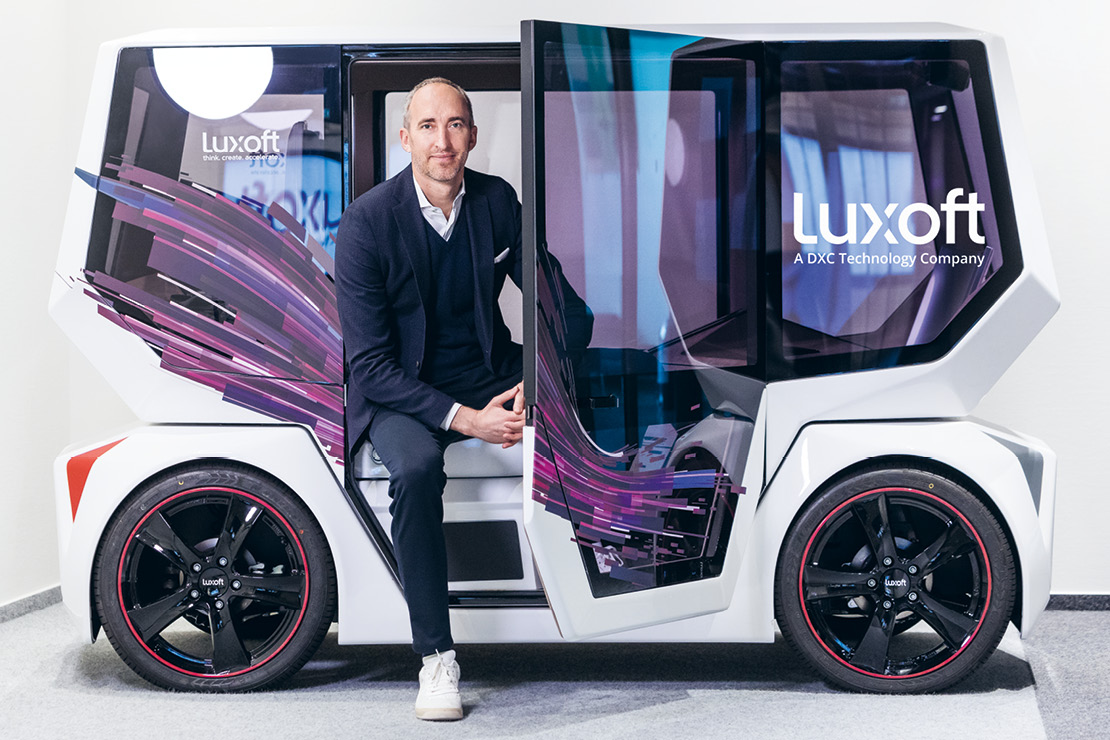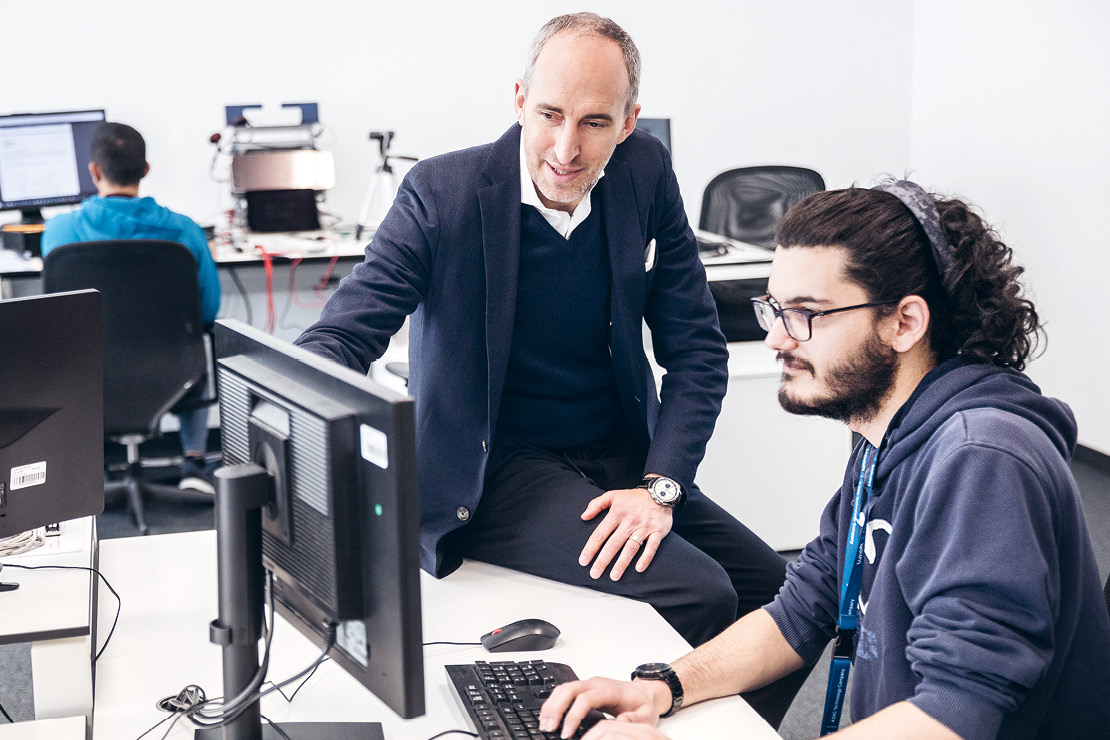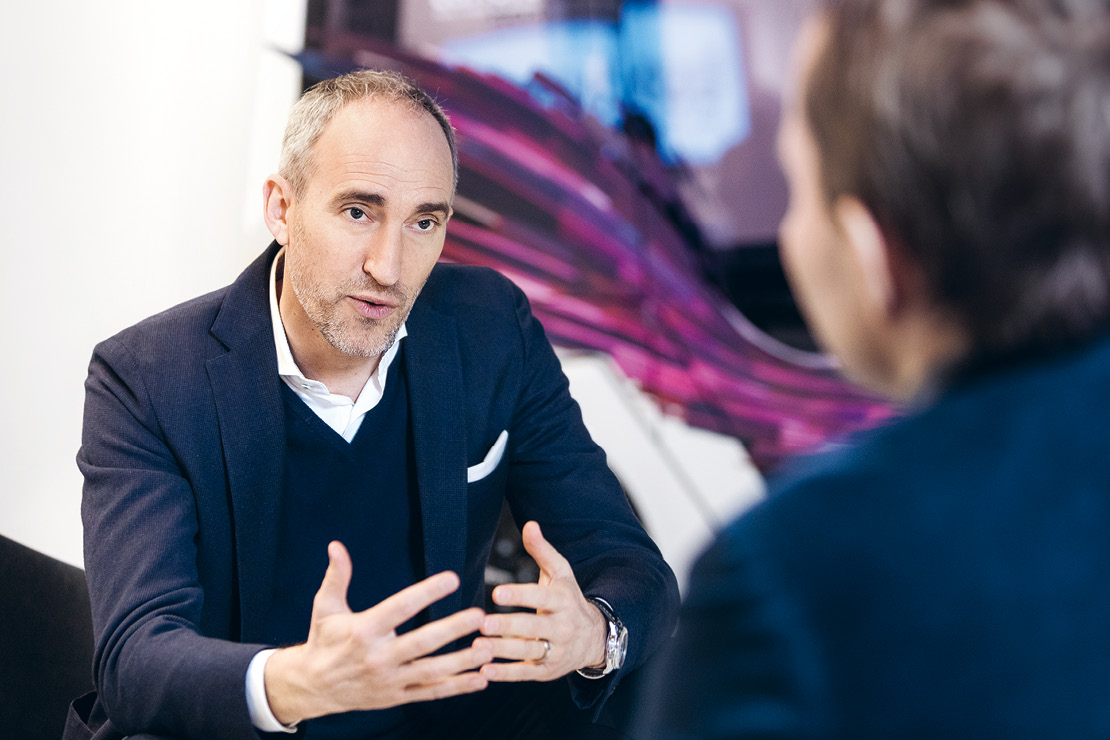
In dialog with LUZ G. MAUCH
Mr Mauch, a few years ago, automotive manufacturers positioned themselves as mobility providers. Currently, the transformation into software-driven tech sub-companies is at the top of the strategic agenda for many OEMs and suppliers. How is Luxoft supporting this transformation?
Software engineering and the support of business processes with appropriate methods and tools have always been part of Luxoft’s DNA. In today’s automotive industry, it is well understood that the development of hardware and software must be decoupled. Only if the two are strictly separated can manufacturers and suppliers create the technical prerequisites for updates in the car and keep systems and apps up-to-date throughout the entire life cycle. This enables automakers to engage customers through the development of new digital services. At the same time, this step reduces complexity and costs. In this environment, Luxoft sees itself as an expert advisor and provider of end-to-end technology solutions as part of a globally growing partner ecosystem. Our portfolio includes the development and testing of driver assistance systems and autonomous driving functions, the implementation of digital instrument clusters, head-up displays, multimedia infotainment solutions, and the definition of E/E architectures and the associated backend infrastructure.
Fair enough. But the digital economy is all about being close to the customer and gaining a lot of information. You want to recognize trends early on and anticipate behavior as precisely as possible …
Absolutely right. That’s why we always combine technical excellence with our expertise in strategic business transformation. New vehicle models are not finished when they roll out of the assembly hall; vehicles continue to optimize and expand their driving functionality and offer customers new mobility experiences. This lays the foundation for digital business models. To put it in a nutshell: The software revolution in cars is in full swing, and all manufacturers and system partners have understood that. However, not all of them are equally able to tackle the associated engineering challenges on their own. For example, when it comes to transforming continuous development into continuous software delivery, many turn to our expertise. We know what requirements software-defined vehicles place on E/E on-board architecture, connectivity, and the IT backend – whether cars or trucks.
Let’s delve into this aspect: What is the best way to fully integrate the vehicle into the digital world?
One viable path is undoubtedly via a zonal E/E architecture where the consolidation of ECUs will continue. Today, individual software functions no longer run on many control units distributed throughout the car, but on a central system with a few domain control units. In the future these few domain control units will merge into one powerful central computing platform. This approach minimizes interfaces, guarantees fast communication, and can help to significantly reduce development and production costs due to the reduced complexity in systems integration.
Today, developers must integrate software artifacts into running systems at high frequency. So how does Luxoft deal with this challenge?
We consistently draw on industry standards in the development process and use our tried-and-tested in-vehicle software development stack. This results in an optimized development process in close coordination with our customers. Even downstream processes such as testing, validation, and software deployment benefit from our tight feedback loops, which are integral to all projects. Thanks to tried-and-tested blueprints and modular software, the cost and resource requirements remain within the defined limits. Not everything always has to be invented from scratch.
What role do simulations and scalable testing options play?
Today, there is no way around incremental development. With connected and self-driving cars, the earlier projects are on stable environments for testing and validating software, the better. The overall system must follow a modular structure and be implemented step by step to ensure quality and process compliance. Particularly in phases where software engineering cycles are becoming shorter and shorter, it would not be responsible to rely on a single extensive integration test of all domains at the very end. This applies equally to vehicle electronics and sensor-based driver assistance and safety systems.
To strengthen the talent base, Luxoft actively cooperates with initiatives such as Startup Autobahn and is also quite open to an exchange with competitors – we call this Coopetition – cooperative competition.
How open are you to collaborating with startups or perhaps even competitors?
Luxoft’s international workforce is growing; in the automotive sector, we passed the 3000 mark in 2021. That is a pleasing trend. Nevertheless, we must, of course, face the challenge of continuing to bring qualified software engineers on board. To strengthen the talent base, Luxoft actively cooperates with initiatives such as Startup Autobahn and is also quite open to an exchange with competitors – we call this Coopetition – cooperative competition. Behind this is the realization that close collaboration with competitors can create benefits for the partner ecosystem as a whole. Luxoft customers also benefit from this.
Which specialist topics are currently at the top of your agenda?
I would like to mention two future-oriented topics at this point: first, architecture consulting with advanced UX concepts for benchmark HMIs and system design. Our specialties are research, analysis, concepts, and specifications, as well as style guides and graphical assets that extend into the area of driver distraction and safety testing. Secondly, we are looking at operating systems for connected cars and connectivity to the backend. Right now, we see a dynamic situation; there are different approaches: On the one hand, some OEMs and suppliers are focusing on developing their own operating systems. On the other hand, the industry is considering a jointly developed basic design that can control non-competing basic functions.
Which concept will ultimately prevail?
The question of which solutions will prevail on the market will be decided solely by the added value they offer drivers and passengers. For a perfect user experience, factors such as intuitive operation and seamless integration play a significant role – not only in the vehicle itself, but also in the extended environment on digital devices. Whether an established manufacturer with its strong brand or Google and Apple are ultimately responsible for this is of secondary importance to most users.



